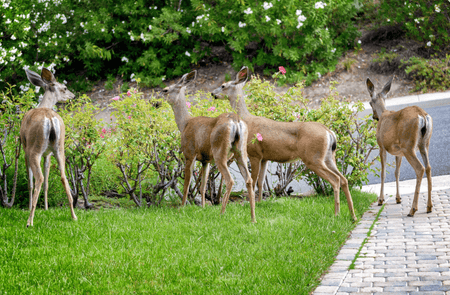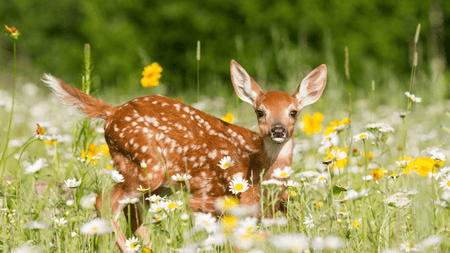Water-Wise Wildlife Gardens: What are Drought-Tolerant Native Plants?

Drought-tolerant wildlife gardens are more important than ever before. As climate change intensifies and water scarcity becomes a growing problem, we need to find ways to create gardens that are both beautiful and sustainable. Native plants are the key to creating drought-tolerant wildlife gardens.
Native plants are adapted to the specific climate and conditions of their native region. They have evolved to be water-efficient and to thrive in harsh conditions. Be sure you shop plants for dry soil or conditions. These same native plants also provide essential food and shelter for local wildlife.
The Native Advantage
There are many benefits to using native plants in drought-tolerant wildlife gardens.
- Water efficiency: Native plants are more water-efficient than exotic plants. They have evolved to survive on the amount of rainfall that is typically available in their native region. This means that native gardens require less watering, which can save you money on your water bill.
- Biodiversity: Native plants support a diversity of wildlife. They provide food, shelter, and nesting sites for birds, butterflies, insects, and other animals. By creating a native garden, you can help to create a more sustainable ecosystem for wildlife.
- Resilience to drought: Native plants are often more resilient to drought than exotic plants. They have evolved to survive periods of low rainfall. This means that your native garden will be more likely to thrive during dry spells.
Native Plants for Drought-Tolerant Wildlife Gardens
Our Drought Defenders native plant collection is crafted for those residing in zip codes where water is a precious commodity. These hardy native perennials not only withstand drought conditions, but also beckon a parade of pollinators throughout the summer and fall. Adapted to local conditions, these plants require less water, lower maintenance efforts, and support biodiversity. Their deep roots improve soil health, and they contribute to a visually appealing garden that withstands changing climates.
Creating a wildlife-friendly garden at home with drought-tolerant native plants is a sustainable and ecologically beneficial choice. Remember to consider your specific region's native plants and local wildlife preferences when planning your garden. Native plants are not only beautiful but also contribute to the health of your local ecosystem.
Here's a list of drought-tolerant native plants that can attract and support local wildlife:
Liatris spicata (Blazing Star): This tall, spike-like flower is a favorite of butterflies and bees, adding vertical interest to your garden.
Penstemon spp. (Beardtongue): With tubular flowers, beardtongue is attractive to hummingbirds and bees. There are numerous species and varieties with different colors and sizes.
Coreopsis spp. (Tickseed): These cheerful, daisy-like flowers are not only drought-tolerant but also provide nectar for butterflies and bees.
Echinacea purpurea (Purple Coneflower): Known for its distinctive cone-shaped center, this plant attracts butterflies, bees, and birds, especially goldfinches.
Achillea millefolium (Yarrow): Yarrow is a hardy, drought-tolerant plant that attracts butterflies and beneficial insects.
Asclepias tuberosa (Butterfly Weed): A favorite of monarch butterflies, this bright orange flower is not only drought-tolerant but also a host plant for butterfly larvae.
Salvia spp. (Sage): Many species of sage are drought-tolerant and attract hummingbirds. Consider varieties like Salvia greggii, Salvia nemorosa, Salvia coccinea.Rudbeckia hirta (Black-Eyed Susan): These cheerful yellow flowers are not only drought-tolerant but also attract a variety of pollinators.
Agastache spp. (Hyssop): With aromatic foliage, hyssop attracts bees, butterflies, and hummingbirds.
Helenium autumnale (Sneezeweed): This late-season bloomer attracts butterflies and is well-suited for dry conditions.
Juniperus virginiana (Eastern Red Cedar): A native evergreen tree, it provides cover and nesting sites for birds and is well-adapted to dry conditions.
Supporting Wildlife in Dry Times
Supporting wildlife in your home garden during drought times is crucial, as water scarcity can significantly impact their habitats and food sources. Here are several ways to help wildlife thrive in your garden during periods of drought:
Provide Water Sources:
- Set up bird baths, shallow dishes, or containers with fresh water for birds and other small animals.
- Place rocks or pebbles in the water containers to provide landing spots and prevent drowning.
- Install a small water feature like a pond or a dripping hose to attract a variety of wildlife. Be sure to keep water sources clean.
Read: Wildlife-Friendly Water Sources
Strategic Planting:
- Choose drought-resistant and native plants that are adapted to your region's climate. These plants are more likely to survive and support local wildlife during water shortages.
- Group plants with similar water needs together to optimize irrigation efficiency.
- Create different layers: Plant a variety of different types of plants to create different layers of shelter and food for wildlife. For example, you could plant shrubs and trees for nesting sites, groundcovers and grasses for hiding places, and flowering plants for food.
Mulching:
- Apply a layer of organic mulch around plants to help retain soil moisture, reduce evaporation, and suppress weeds.
- Mulching also provides a habitat for insects and other small organisms that are essential for the ecosystem.
- Fallen leaves are a great “mulch” for your garden in fall.
Create Shelter:
- Establish shelters, such as brush piles or rock piles, to provide hiding spots for small mammals, reptiles, and insects.
- Keep dead trees or branches (if safe) as they can serve as homes for cavity-nesting birds.
Wildlife-Friendly Plants:
- Plant native species that produce seeds, fruits, or nectar, providing a food source for birds, butterflies, and other pollinators.
- Include a variety of plant types to support different stages of insect development, contributing to the overall biodiversity of your garden.
Avoid Pesticides:
- Minimize or eliminate the use of chemical pesticides, as they can harm beneficial insects and disrupt the natural food chain.
- Opt for natural pest control methods, like introducing predator insects or using neem oil.
Selective Pruning:
- Prune plants strategically to conserve water. Remove dead or diseased branches and focus on only necessary shaping rather than extensive pruning.
- Preserve flowering plants, as they contribute to the nectar supply for pollinators.
Capture Rainwater:
- Install rain barrels to collect and store rainwater for later use during dry periods.
- Use collected rainwater to hydrate plants, providing a water source when natural rainfall is insufficient.
Drought-Tolerant Lawn Alternatives:
- If you have a lawn, consider replacing parts of it with drought-tolerant ground covers or native grasses.
- Lawns require substantial water, and alternatives can reduce water consumption while still providing habitat.
Read: Role of Native Grasses in Wildlife Gardens
By implementing these practices, you can not only conserve water during drought but also create a thriving ecosystem in your garden that supports a diverse array of wildlife. Explore our new native plant collections using your zip code.

Find Native Plants by Zip Code
We took the guesswork out of planting native. Check your zip to see what ships!

























